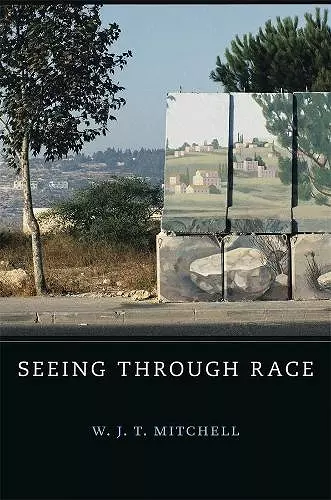Seeing Through Race
Format:Hardback
Publisher:Harvard University Press
Published:28th Jun '12
Currently unavailable, and unfortunately no date known when it will be back

A must-read book for anyone struggling to think outside the racial boxes in which we have been enclosed too long. With characteristic verve and originality, Mitchell breaks through the binaries that have shaped the discourse about race in an ostensibly post-racial America, challenging us to see race as a consequence rather than a cause of racism -- Elizabeth Abel, University of California, Berkeley Seeing Through Race engages with one of the most contested concepts of our time while raising new questions and offering new insights. What Mitchell proposes with regard to race and media is akin to the rethinking of sex and gender in Judith Butler's Gender Trouble, or to the turning of the tables performed on the ethics of violence by Talal Asad in On Suicide Bombing. -- Gil Anidjar, Columbia University This is a brilliant provocation to see anew how we see the world through images bearing on race, but didn't know we were so doing. Extending his lifelong inquiry into how images work in everyday life as well as in the realm of art history and theory, the author releases the liberatory potential of images. W. E. B. Du Bois would, I believe, be most pleased with these almighty clever and passionate lectures recently delivered at Harvard in his name. -- Michael Taussig, Columbia University
According to Mitchell, a “color-blind” post-racial world is neither achievable nor desirable. Against claims that race is an outmoded construct, he contends that race is not simply something to be seen but is a fundamental medium through which we experience human otherness. Race also makes racism visible and is thus our best weapon against it.
According to W. J. T. Mitchell, a “color-blind” post-racial world is neither achievable nor desirable. Against popular claims that race is an outmoded construct that distracts from more important issues, Mitchell contends that race remains essential to our understanding of social reality. Race is not simply something to be seen but is among the fundamental media through which we experience human otherness. Race also makes racism visible and is thus our best weapon against it.
The power of race becomes most apparent at times when pedagogy fails, the lesson is unclear, and everyone has something to learn. Mitchell identifies three such moments in America’s recent racial history. First is the post–Civil Rights moment of theory, in which race and racism have been subject to renewed philosophical inquiry. Second is the moment of blackness, epitomized by the election of Barack Obama and accompanying images of blackness in politics and popular culture. Third is the “Semitic Moment” in Israel-Palestine, where race and racism converge in new forms of anti-Semitism and Islamophobia. Mitchell brings visual culture, iconology, and media studies to bear on his discussion of these critical turning points in our understanding of the relation between race and racism.
A must-read book for anyone struggling to think outside the racial boxes in which we have been enclosed too long. With characteristic verve and originality, Mitchell breaks through the binaries that have shaped the discourse about race in an ostensibly post-racial America, challenging us to see race as a consequence rather than a cause of racism -- Elizabeth Abel, University of California, Berkeley
Seeing Through Race engages with one of the most contested concepts of our time while raising new questions and offering new insights. What Mitchell proposes with regard to race and media is akin to the rethinking of sex and gender in Judith Butler's Gender Trouble, or to the turning of the tables performed on the ethics of violence by Talal Asad in On Suicide Bombing. -- Gil Anidjar, Columbia University
This is a brilliant provocation to see anew how we see the world through images bearing on race, but didn't know we were so doing. Extending his lifelong inquiry into how images work in everyday life as well as in the realm of art history and theory, the author releases the liberatory potential of images. W. E. B. Du Bois would, I believe, be most pleased with these almighty clever and passionate lectures recently delivered at Harvard in his name. -- Michael Taussig, Columbia University
ISBN: 9780674059818
Dimensions: unknown
Weight: unknown
248 pages